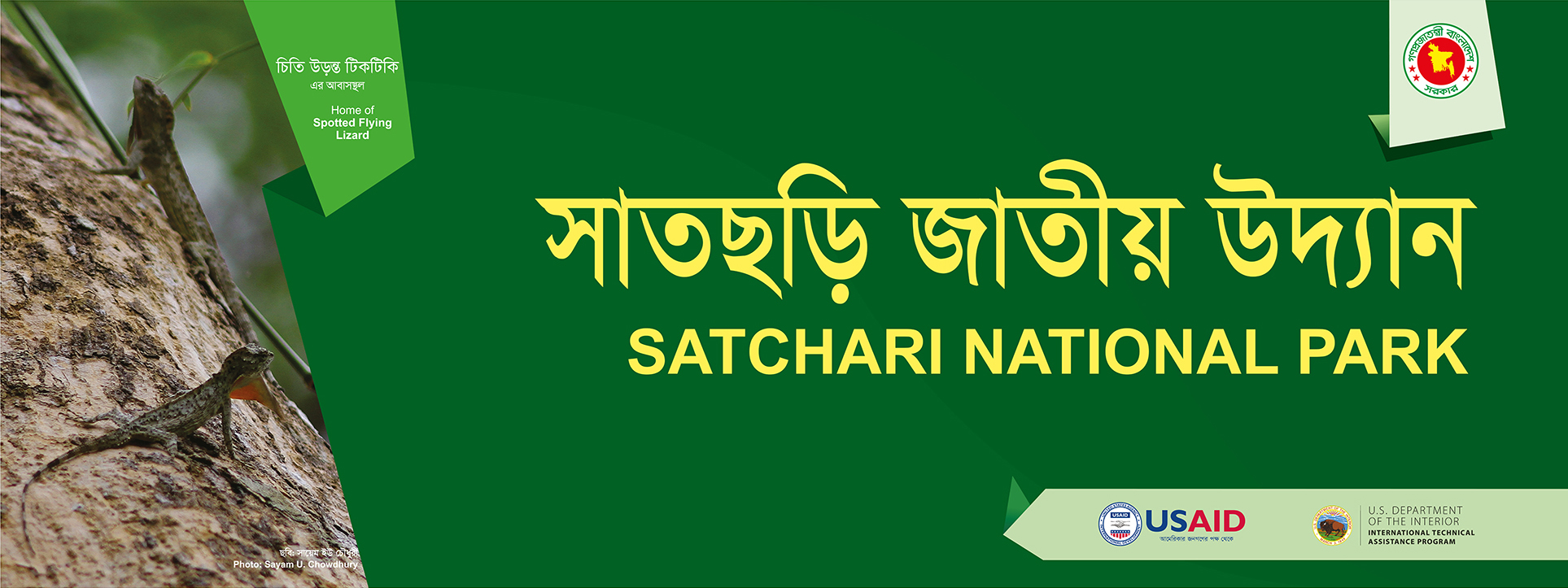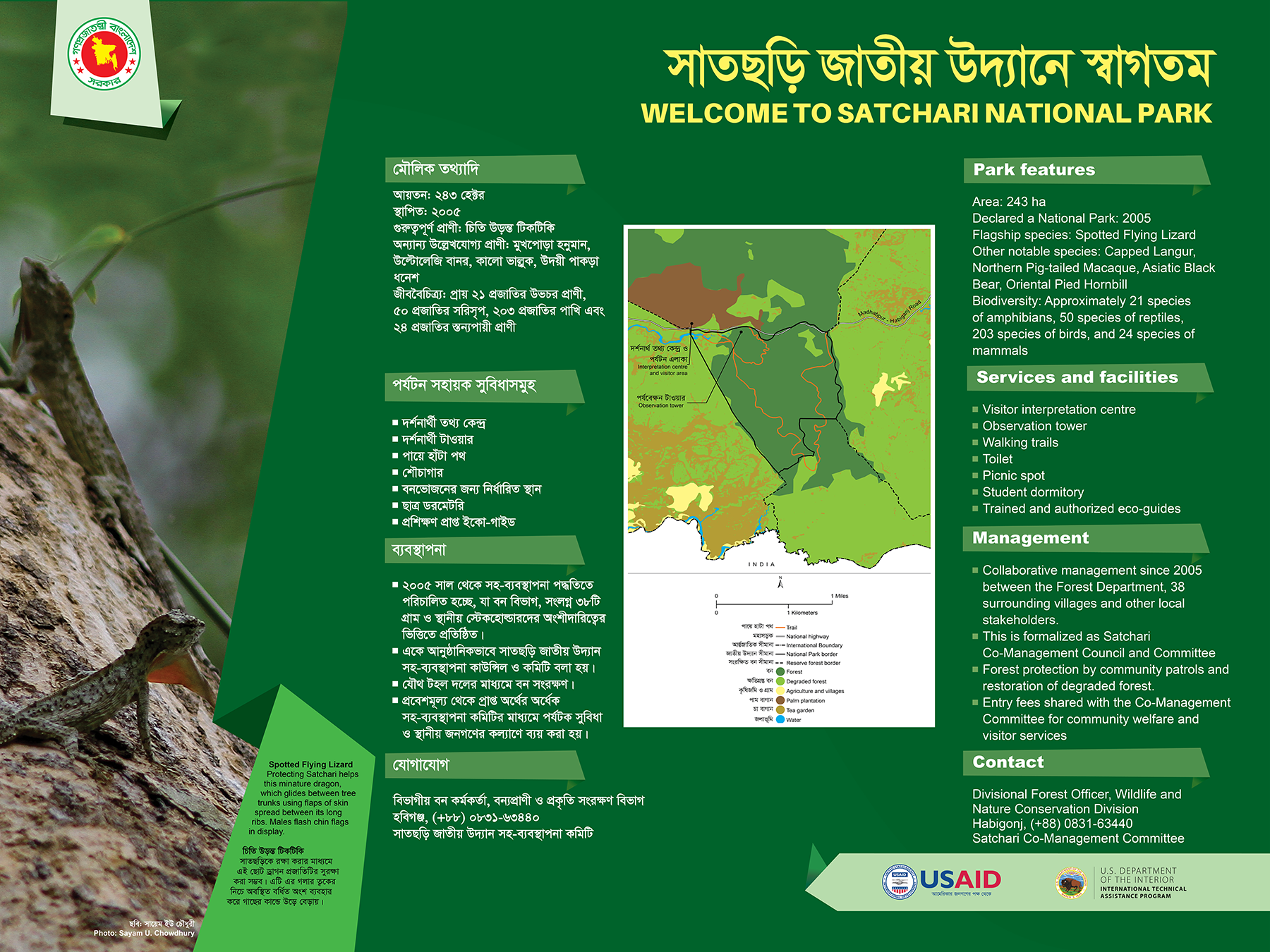Satchari National Park
Chunarughat, Habigonj.
Satchari National Park (SNP) was established in 2005 with an area of 243 hectares. This small Park is located in Raghunandan hill reserve forest, in Paikpara Union of Chunarughat Upazilla, Habiganj District. “Satchari” is a Bangla word meaning ‘Seven Streams’ and the Park takes its name after the seven streams flowing inside the forest. These streams provide water for wildlife and are an important part of the ecosystem of the park, fossilized tree branches can be found among their sandy beds in the dry season.
Satchari National Park has a rich flora and fauna. More than 200 tree species have been identified, including ones typical of tropical evergreen forest such as Garjan (Dipterocarpus turbinatus), Chapalish (Artocarpus chaplasha), various figs (Ficus sp.), and Jarul (Lagerstroemia sp.). This remnant fruitrich forest supports globally threatened primates such as Northern Pig-tailed Macaque, Capped Langur and Western Hoolock Gibbon. It is a popular forest for birdwatching, and notable colorful species include Red Junglefowl, Redheaded Trogon, Oriental Pied Hornbill, Green Imperial Pigeon, and in the early monsoon breeding cuckoos and Hooded Pitta.
A tipra ethnic village inhabited by 24 families is located within the National Park. Peaceful Tipra para is a jewel of the Park. This community for long sustained themselves from the forest, with co-management several tipra youths now earn a living as tourist guides, and other families have diversified their professions.
WHY SATCHARI NATIONAL PARK IS IMPORTANT?
Satchari National Park stores 266 tons of CO2 per hectare for climate change mitigation
Over 200 species of tree, including some rare species
About 24 species of mammals, 38 species of reptiles, 19 species of amphibian, and 183 species of bird
Populations of three globally threatened primates
Tipra ethnic community reside here
Popular and easily accessed forest for visitors
Surrounded by tea estates and villages, local people are a constant pressure on the NP and adjacent forests, threatening biodiversity
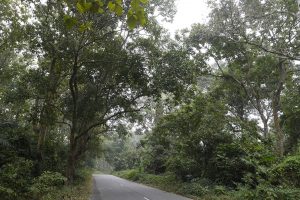
Photo: Obaidul Fattah Tanvir
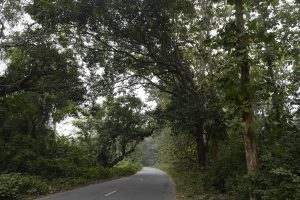
Photo: Obaidul Fattah Tanvir
CO-MANAGEMENT HELPS PROTECT CRITICAL FOREST HABITATS IMPORTANT FOR A WIDE RANGE OF WILD FLORA AND FAUNA, INCLUDING NATIONAL AND GLOBALLY THREATENED SPECIES …
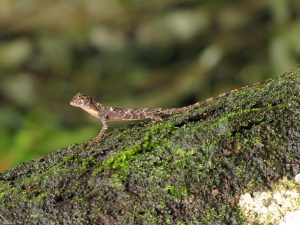
Spotted Flying Lizard (Draco maculatus)
Please support this important work.
There are miniature dragons hiding in the forest, but they are harmless and only eat insects. This remarkable small lizard lives high on tree trunks and spreads out flaps of skin between its elongated ribs so that it can glide between trees without needing to come to the ground. The males have flags under their chins that they flash out to display. Satchari is a good place to see this rare lizard of our eastern forests.
Sustaining Nature, Biodiversity, and Local Communities
Satchari Co-Management Committee engages with local communities to conserve Satchari National Park and its threatened species, through climate-resilient natural resources management and diversified livelihoods
Co-management in Satchari was established in 2006 and is recognized through a Ministry of Environment and Forests order published on 15 May 2006. Satchari CMC formally works with and includes Bangladesh Forest Department as well as all key local stakeholders including local government and of course representatives of the surrounding 38 villages who are organized into a common forum. The CMC collects entry fees from visitors, operates a visitor information center, and oversees community patrols and eco-guides. Although SNP is small this CMC also aims to influence sustainable land uses and respect for conservation over a much larger area covering about 17,550 hactares.
SATCHARI COMANAGEMENT COMMITTEE (CMC)
KEY OBJECTIVES:
- Ensure long-term conservation of biodiversity
- Mobilize local people as environmental stewards and stakeholders
- Improve the lives and livelihoods of local people, by diversifying livelihoods, improving skills, and reducing vulnerability to hazards and climate change
- Encourage eco-tourism, and provide adequate facilities for visitors
- Provide a forum for discussions,consultations, and conflict resolution
How You Can Help ?
Please support our efforts to strengthen conservation. The work of Satchari CMC and associated organizations involves local communities working with local government and Bangladesh Forest Department. These activities depend on support from grants and outside resources.
Satchari CMC has a bank account (Pubali Bank Limited, Chunarughat Branch, Habiganj) and can receive grants from domestic sources. For international assistance, funds can be channeled through CNRS – a national NGO which has helped establish the CMC. CNRS is registered with Bangladesh NGO Affairs Bureau no 841. Its programs focus on Natural Resource Management.
Your donations to Satchari CMC will support:
- Improving protection of forest and threatened wildlife, through community patrols
- Promoting eco-tourism (e.g., establishing and maintaining visitor facilities and publicizing SNP)
- Increasing community sustainability (e.g. reducing disaster vulnerability and improving services)
Contacts
President
Alhaj Chowdhury Samsunnahar
Satchari Nishorgo Sangtha (CMC)
Satchari National Park,
Chunarughat, Habiganj
Mobile:01731 977 827
Member Secretary
Mr. Mahmud Hosain
Satchari Nishorgo Sangtha (CMC)
Satchari National Park,
Chunarughat, Habiganj
Mobile: 01856 576 876
Forest Department
Mr. Mihir Kumar Doe
DFO, Wildlife Management & Nature Conservation Division, Moulabi Bazar
Mobile:01712 566 001
Tel:0861/62878
Email:mihir_fd@yahoo.com
CNRS
Dr. Mokhlesur Rahman
Executive Director, CNRS
Floor 4-6, House 13, Road 17, Block D, Banani, Dhaka 1213
Tel: 01711 549 460
Email:mokhles_cnrs@yahoo.com
Facebook Page
MAPS



